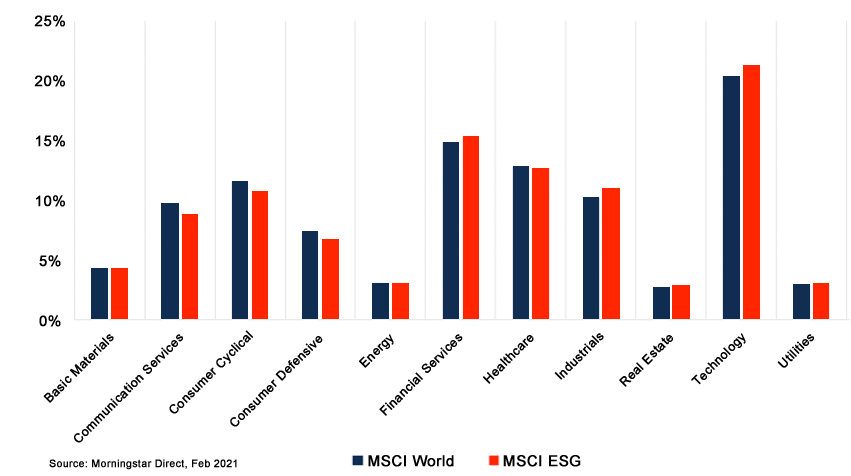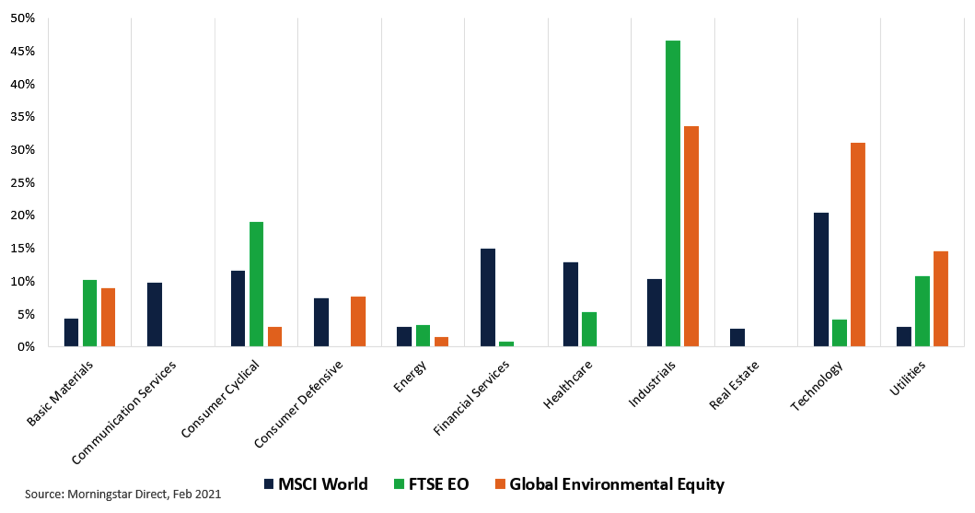Asset owners have for years known and understood the risks associated with climate change – the threat it poses to companies, countries and people. And they’ve taken action. We’ve seen the signing of the UN Principles for Responsible Investing by scores of asset owners and managers and large-scale divestment from fossil fuels by individuals and institutions representing over US$14 trillion.[1]
But while signatures and divestment can help, they won’t power the future. Facing us on the road ahead is a giant economic and societal leap from old ways of producing and consuming energy to a new energy economy that is sustainable, effective and looks nothing like what’s in place today.
Dubbed the “Great Energy Transition”, this jump from old to new is happening now and it’s being driven by powerful themes that are fundamentally changing how we produce and consume energy.
Fueling this transition is a large and growing set of industries, sectors, and companies that are doing and making what’s needed to support the transformation. We believe this represents an unprecedented opportunity for asset owners to invest early on and make a meaningful contribution to a sustainable future. But getting exposure to these opportunities can be a challenge – especially if asset owners take too narrow an investment approach.
Environmental, social and governance (ESG) managers saw tremendous inflows in 2020 even amid the COVID-19 pandemic. On the surface at least, an ESG integrated approach sounds like it’s checking all the right boxes for asset owners when it comes to investing sustainably. Look under the hood, however, and some limits become evident.
A side by side comparison of sector exposure in the MSCI and MSCI ESG indices (focused primarily on companies with positive ESG behaviours) shows the two are barely distinguishable from one another (Figure 1).
Figure 1: Sector exposure – MSCI World vs MSCI World ESG
 Contrast that to the sector exposure of our Mackenzie Global Environmental Equity Fund and FTSE Environmental Opportunities – where industrials and utilities are leading the way, two sectors in which companies are actually doing the work needed to transition to new forms of energy (Figure 2).
Contrast that to the sector exposure of our Mackenzie Global Environmental Equity Fund and FTSE Environmental Opportunities – where industrials and utilities are leading the way, two sectors in which companies are actually doing the work needed to transition to new forms of energy (Figure 2).
Figure 2: Sector exposure – MSCI World vs FTSE EO vs Mackenzie Global Environmental Equity Fund
 Focusing only on ESG integrated strategies can limit investors’ potential to benefit from the growth that is going to come with the energy transition. On the other hand, we believe companies that make the “stuff” for the low carbon, sustainable economy represent a massive opportunity for investors, provided they start looking in the right place.
Focusing only on ESG integrated strategies can limit investors’ potential to benefit from the growth that is going to come with the energy transition. On the other hand, we believe companies that make the “stuff” for the low carbon, sustainable economy represent a massive opportunity for investors, provided they start looking in the right place.
Environmental thematic strategies identify industries and companies based on themes driving climate change as well as the solutions to facilitate the leap from old to new forms of energy. Those opportunities revolve to a great extent around how we create and use energy – and they are vast.
Today, the world consumes about 14 billion tons of oil equivalent energy (160,000TWh) each year to power our $88 trillion global economy.[2] A stunning 84% of this energy comes from fossil fuels.[3] In addition, much of our current power infrastructure will exceed its operating lifespan and need to be replaced, at a time when global electricity demand has been growing at 2.8% a year.[4]
Many of the solutions to this problem are right in front of us. Since 2012, solar and wind power have been gaining market share. And, although solar is about two to three per cent and wind about five to six per cent of current global generation, the cost of building new plants is half that of building new gas or coal generating plants.[5] Last year alone, 90% of new electricity generating investment went to renewables.[6]
But it’s still not enough. Back in 2009, the International Energy Agency (IEA) predicted the world would need $37 trillion in investment by the year 2030 to stabilize greenhouse gas emissions at sustainable levels and to avert the worst of climate change.[7] According to the OECD and the Mackenzie Greenchip team’s own analysis, $2.5 trillion in annual investment is required to deliver on its climate change goals. In each of the past four years, however, investment has only been about $800 billion leaving a $1.7 trillion gap.[8]
To understand where the Great Energy Transition is already having a profound impact, you need only look at how some major sectors are changing and the investment that will be needed in the coming years:
- Transportation: Cars and buses increasingly will be powered by electricity.
- Construction: LED lights are replacing incandescent and fluorescent bulbs while gas and oil furnaces are being replaced with electrified heat pumps optimized with computerized building energy management software systems.
- Manufacturing: Specialized engineering firms are redesigning factories, replacing old blowers, stampers, conveyor belts with energy efficient ones driven by variable speed motors, power management semiconductors and computer systems.
- Agriculture: New precision technologies will change how we fertilize and irrigate agriculture.
It’s also worth noting that, while thematic strategies offer exposure to some big names like Siemens, Hitachi or Johnson Controls, the vast majority of holdings are companies that are probably unfamiliar to most people. Instead, thematic investors can tap into an opportunity that includes manufacturers of power infrastructure and companies that produce and sell the equipment needed to make the economy more resilient for the future. While they aren’t big brand names, these companies have vitally needed products and services.
Given the spectrum of opportunities, we believe asset owners can’t get enough exposure to this transition through typical ESG integrated strategies alone. They must also consider allocating to investments more directly involved in the Great Energy Transition and through an environmental thematic lens. ESG should be viewed as one tool in the kit – but it likely isn’t the entire solution. A thematic approach can help investors to zero in on themes that matter.
The energy leap has created myriad new ways of thinking about and addressing climate change – and it truly is the path forward to a sustainable future.
Sources:
[1] Source: Go Fossil Free
[2] BP Statistical Review of World Energy 2020 & Our World in Data 2019
[3] BP Statistical Review of World Energy 2020 & IEA April 2020
[4] Global Energy Statistical Yearbook 2020
[5] Lazard Levelized Cost of Energy Analysis 2020
[6] Tech Crunch November 2020 & Renewable energy defies Covid-19 to hit record growth in 2020 The Guardian November 2020
[7] “World needs $48 trillion in investment to meet its energy needs to 2035.” International Energy Agency, 2014.
[8] Private Finance for Sustainable Development. Remarks by Angela Gurria, OECD, January 29, 2020.

